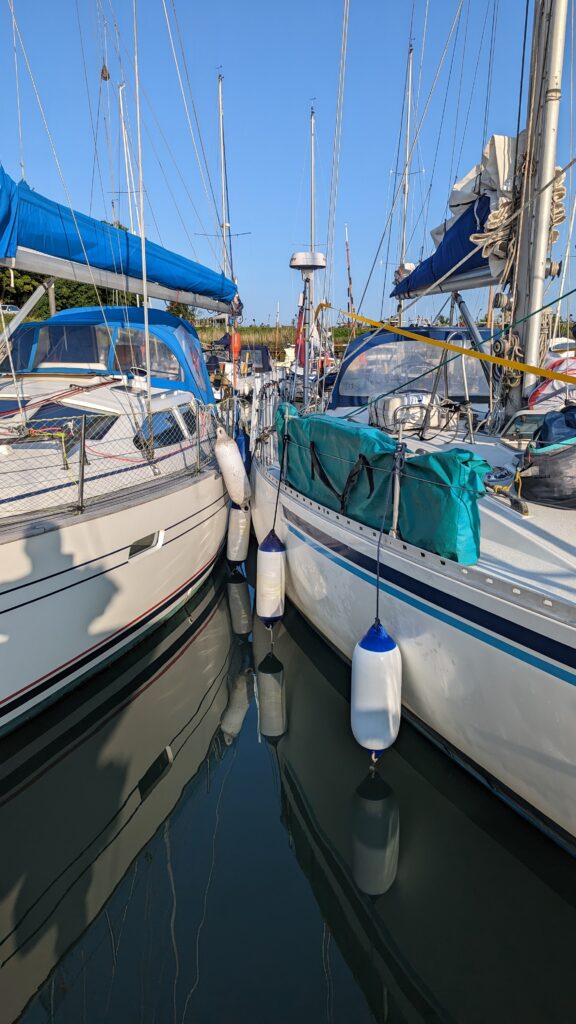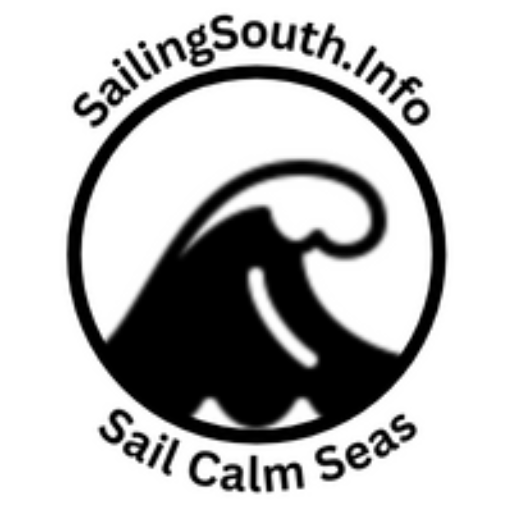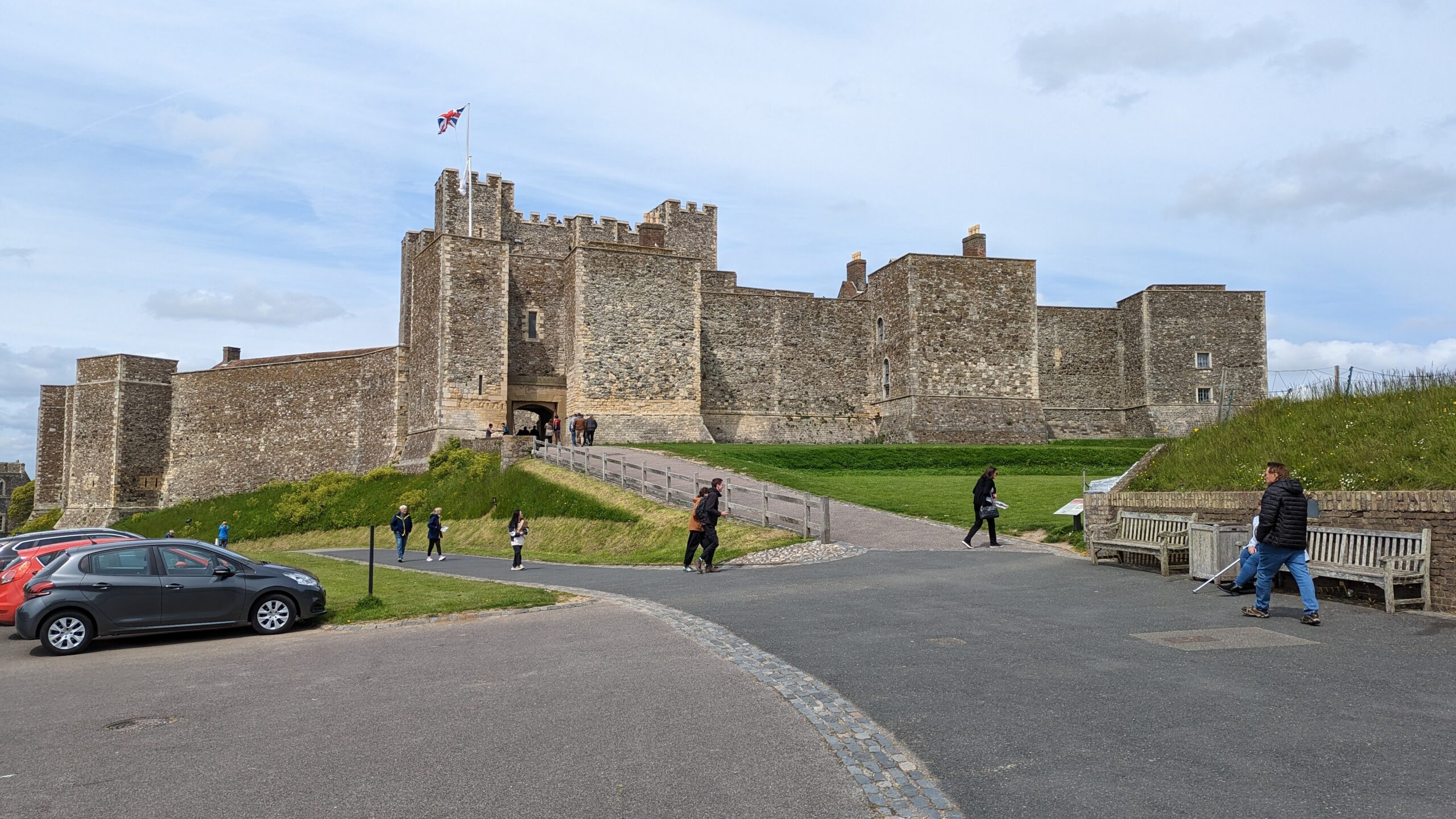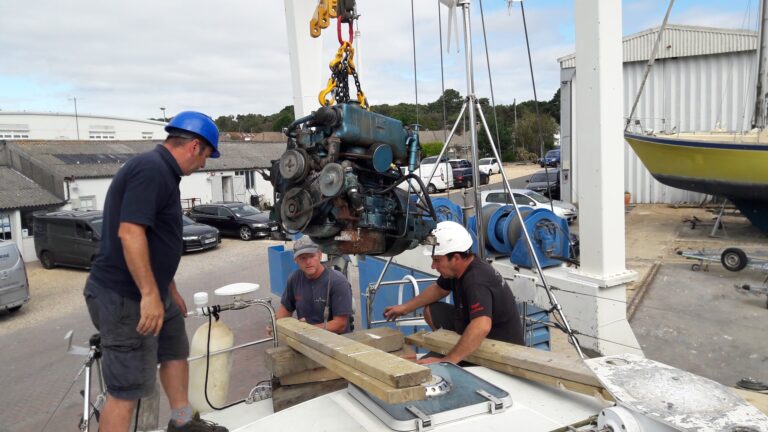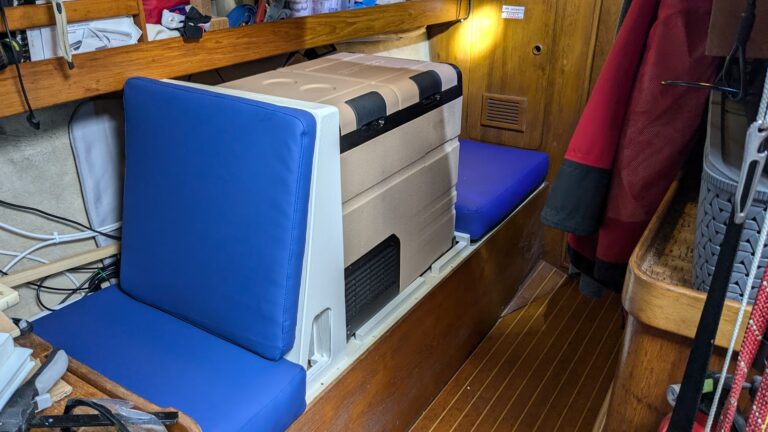I started this week holed up in Sovereign Harbour at Eastbourne. The wind was being uncooperative, not for the first time this year, or indeed the last I’m sure.
I eventually managed to cast off the lines again on Sunday (14th May). Leaving through the lock was a challenge, not helped at all by the arrogance of one individual fishing boat skipper who had entered the lock just in front of me. He had left a space that was only just long enough for me, and it was tucked into the alcove in the side of the lock just as you entered, no way a sailboat was going sideways into that space. I asked if I could pull up along side him but got snarled at in reply. Eventually I managed to put the front of my boat into the side behind him, then when his fishing charter customers started to help me he begrudgingly lent a hand. A sail boat with a great big fin for a keel (which is designed to keep a boat going straight) underneath does not manoeuvrer sideways like a power boat with multiple engines. The difference between this guy and the consideration of the fishermen who helped me on my way in was stark, but the remark I received from the lock keeper after he had left showed that some people are well known for their ignorance.
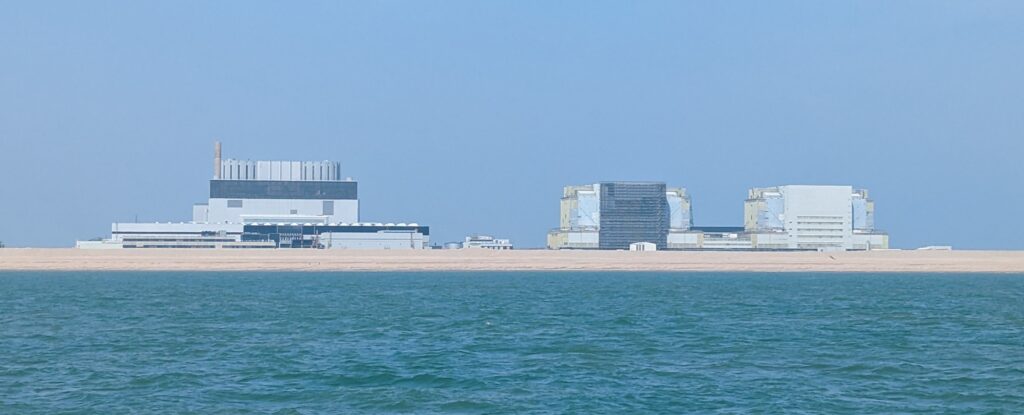
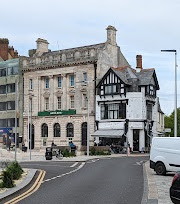
Once out of the harbour and motoring along the channel there were lobster and crab pot marker buoys everywhere, there were even some along the edge of the channel, dangerously close if it had been rougher and a skipper was unaware. Once I got to the end of the channel it was a free for all with assorted jerrycans of various colours waiting with trailing ropes to ensnare an unsuspecting boats propeller. It was like a slalom course steering around these obstacles, I spent my time scanning ahead intently in the rolling seas, eventually you start to see shadows and markers were there is none. This is a hazard that affects every shallow coastline, both here and abroad, but I have never seen them so close to marked shipping channels.
Rounding Dungeness sands I was motoring along in clear blue sky and calm seas and no wind, however once past this point while I remained in that clear blue sky, but the land off to the north of the boat disappeared behind a curtain of rain, for the remainder of the trip I had no sight of land until I was 2 or 3 miles off Dover.
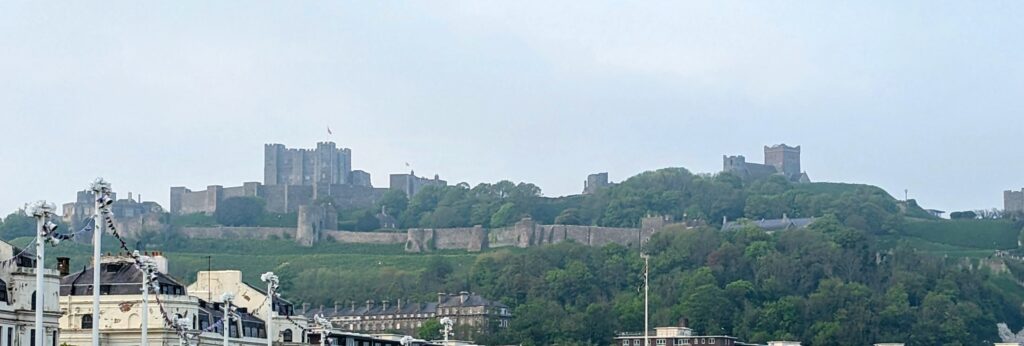
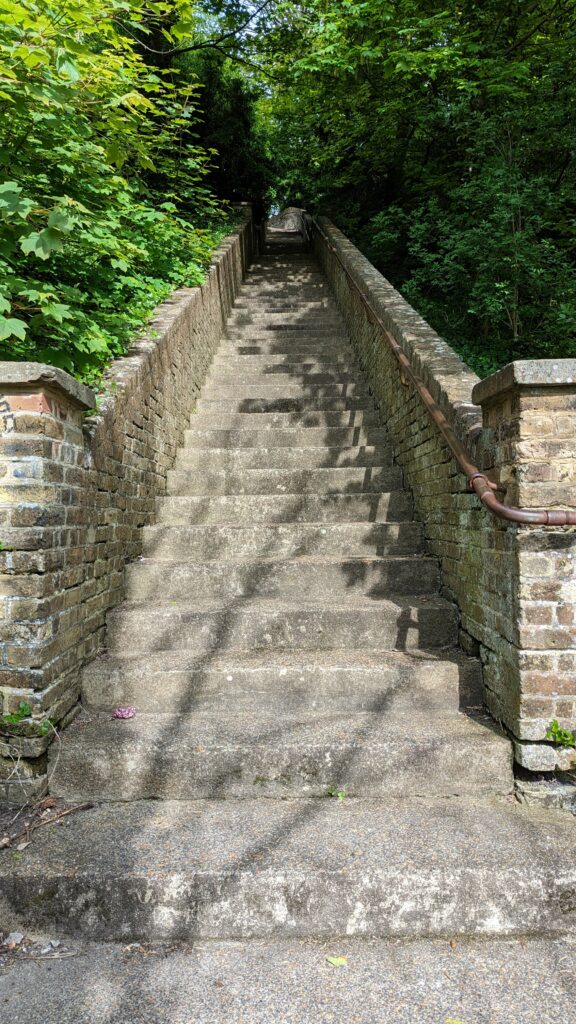
Entering Dover wasn’t the hassle I feared. You have to notify the harbour control about 2 miles off with your intended entrance (there’s a choice of two), and then call them again when you’re about 200 meters off to get clearance to enter the harbour. Dover is the busiest ferry port in Europe, as well as having cruise ships and cargo ships coming and going. Harbour control are very friendly towards yachts, but it pays to be out of the way with some of these big ships moving about.
I spent a day in Dover, including a trip up to the castle. The walk up the hill was not far, but steep, real steep. I really must keep working to improve my fitness, years of working night shifts and doing very little else have taken their toll.
Dover Castle has a long history, and was a military establishment up to and including the cold war. Unfortunately you can’t get into the cold war bunkers (as yet, maybe one day) but there are buildings dating back to Roman times with the ruins of the lighthouse, the medieval castle and the WW2 tunnels and operations rooms you can explore, so worth a visit in my view.
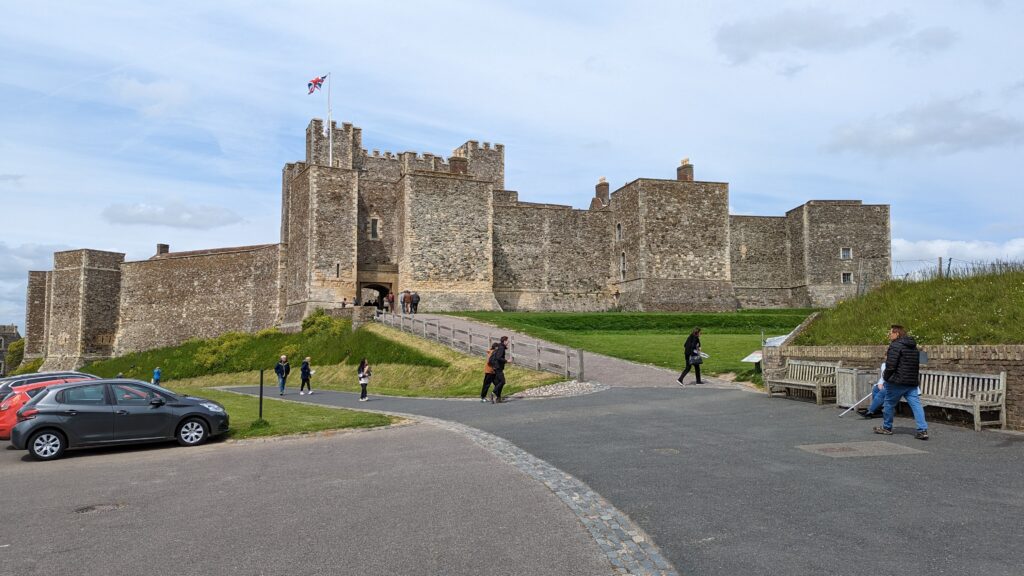

Tuesday was a short potter round to Ramsgate. For once I had great sailing weather apart from the wind being directly in front of the boat. I could have zig-zagged my way up the coast, but with cliffs on one side and Goodwin Sands, the graveyard of at least 2000 ships, on the other I decided that I’d rather motor the 3 hours along the coast. Maybe if I hadn’t been alone on the boat I would have sailed, but that cautious side of me is still strong.
Ramsgate is an okay place, but if I’m honest it is nothing special. I did visit the sailors church and have a wander around the town, but it isn’t somewhere I’d go out of my way to visit again. It’s a handy stopping place for sailing, and has a lot of watering holes, but that’s about it.
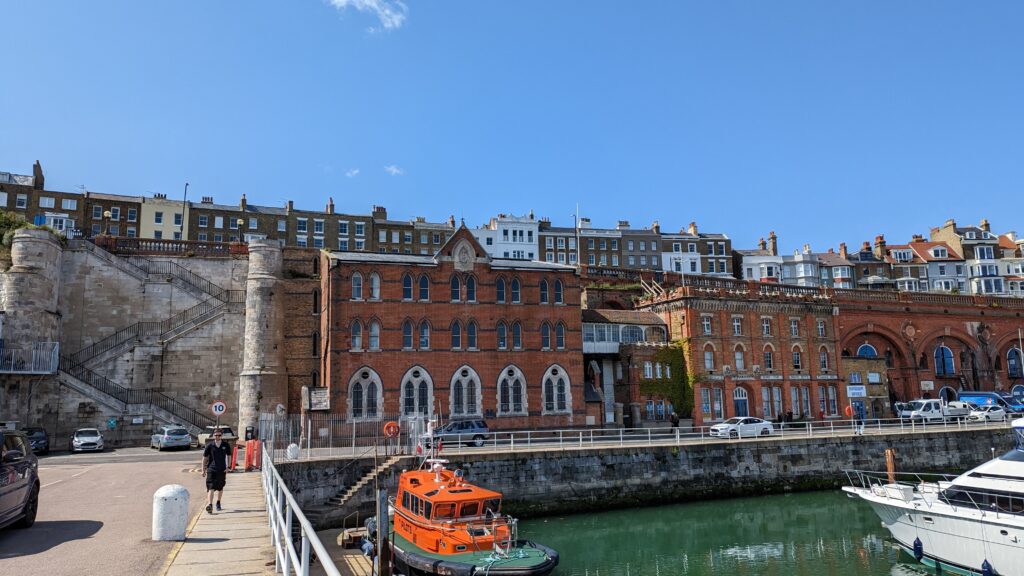
The Thames Estuary
Crossing the Thames estuary has been a little bit of a daunting thought. There are mud and sand banks in abundance, as well as the shipping channels going in and out of the London ports. I planned my route sticking to the main channels well aware that this might be busy with shipping. However without local knowledge and a very up-to-date pilot book I was not going to mess with these shifting sand banks. I’m sure there are many short cuts I could have taken, but I had timed my arrival at Felixstowe and the river Orwell to coincide with the beginning of the rising tide to take me up the river.
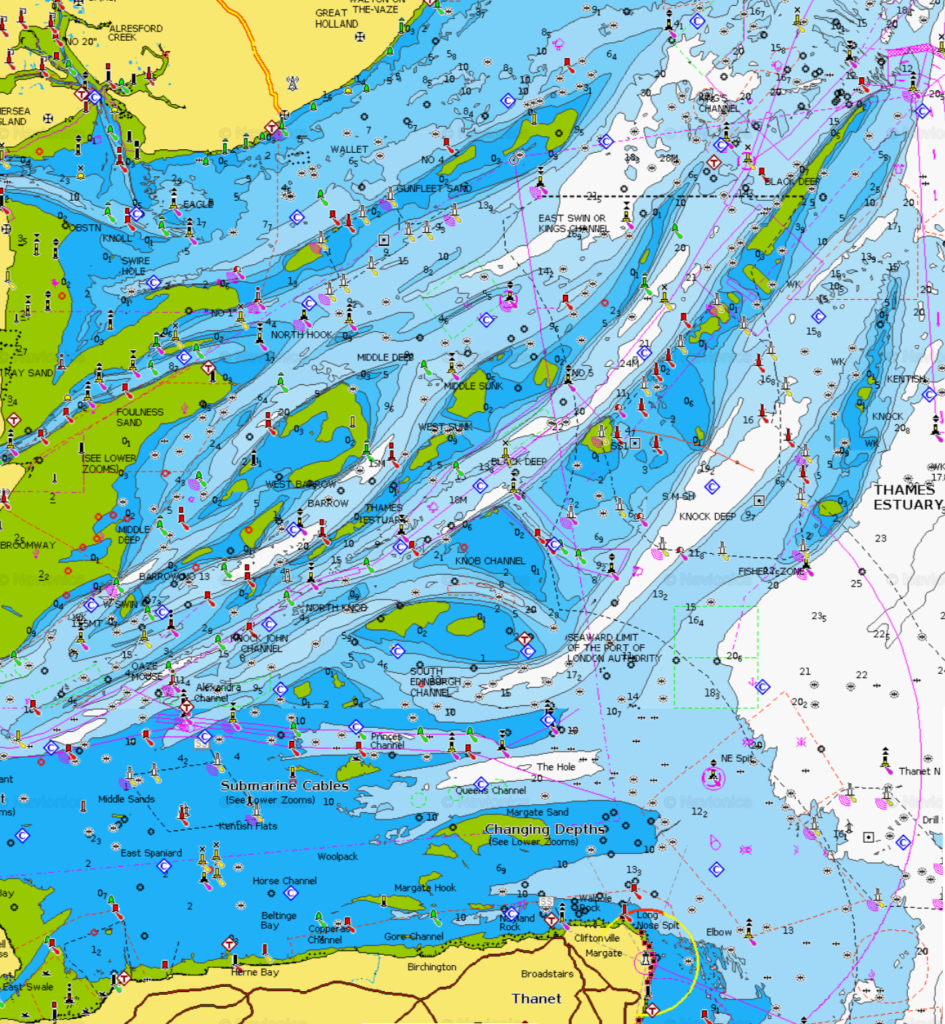
There are plenty of short cuts, but local knowledge is a must if you leave the channels.
The trip started off how I had expected. As I went past North Foreland I could see a line of 11 ships going in various directions. Thank goodness for the AIS* receiver I had fitted earlier in the year, I could tell that some of them were anchored and not moving, others were crossing my path. I also had the tide going into London pulling me to one side.
*Note (and maybe a rant!): AIS is an Automatic Identification System. All ships transmit their ID, speed and direction, amongst other details. I can pick this up on the electronics system and tell who is moving, in what direction and how fast. Small boats like mine are not required to transmit this information. However the “must have all the gadgets and gizmo’s” sailors who do have the transmitters just end up cluttering the information screens and make the system useless. In the Solent for example everyone is heading towards everyone else at some point and so collision avoidance alarms are going off constantly, filling the air with beeps and flashing displays, enough to distract even the most hardened of skippers. In practice everyone turns off the collision alarm, and so if a ship is heading towards your position the system won’t tell you.
As I sailed past the north west corner of Knock Deep wind farm it felt quite surreal to be far enough off shore that I was now out of sight of land, with only these giant windmills to remind me of civilisation, and yet the sea was only 9 meters deep. I turned into Black Deep channel and the tide, now flowing out from London, washed me towards the north / north east. Unfortunately this was again directly into the wind so I was motoring again.
It wasn’t long before I could see the giant cranes of Felixstowe port, and eventually I reached the end of the channel and so I could turn towards my destination. Now I could sail again, but the joy was short lived as the winds began to die. I persevered for a while as I was a couple of hours ahead of my plans and the tide would still be flowing out of the river if I was too early, its better to drift gently and quietly under sail I find than have the noise of the engine disturbing a sunny spring day. Eventually though, when there was not enough wind to move the boat I had to relent and use the engine again for the last few miles.
Felixstowe is an immense container port, dealing with some of the biggest container ships. The immense cranes can, as I said earlier, be seen from nearly half way across the Thames estuary. However, once you are past this area, the river Orwell, and it’s twin the river Stour that branches off to the south, are amongst the most beautiful tree lined rivers around England. This was where my father had bought his sailing boat from in the 1980’s, we had several trips along the Suffolk and Norfolk coasts in that boat, but being smaller it could get into harbours I wasn’t going to be able to.
Finally I reached Suffolk Yacht Harbour. The tide had barely risen and I gingerly entered the marina at the slowest pace I could manage, at times there was next to no water between the bottom of the keel and the mud on the bottom. I reminded myself that even if I did run aground, the water level was now rising so I’d soon be lifted clear of the mud. I turned to find my birth, and was surprised that it was a little narrow, well, VERY narrow really. I managed to squeeze my boat in without hitting the boat next door and only a minor bump along my side onto the pontoon. When I stood back and looked the fenders were squashed on both sides! Still, its a quiet place to spend a couple of days.
